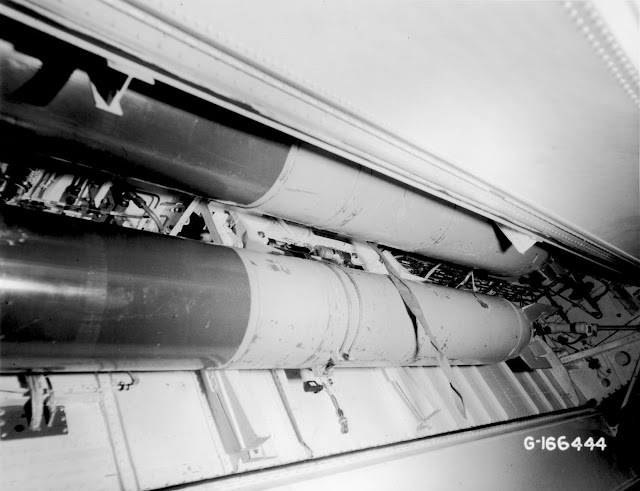FS 12197, International Orange, has been used on U.S. Navy aircraft for high-visibility markings. It can be confused with other colors also used for that purpose. Also note that it is more red-orange than orange...
For example, Robert Thomas, a volunteer at the National Naval Aviation Museum in Pensacola, provided this synopsis:
"For the high visibility markings the USN originally used the Orange Yellow color (think the SNJ, etc.). In the early 1950s they started using International Orange on some aircraft. The Naval Air Training Command in 1952 tested various colors in hopes of better visibility. In September 1952 "Day-Glo" paint had been developed. It was labor intensive, as it had to be applied over a White lacquer finish, needed two coats, and started dulling after one to two months. After trying other paint designs, they went back to the Orange Yellow overall markings. In 1953 the USN discontinued all use of Day-Glo paint.
In 1956 International Orange paint began to be used on tactical aircraft in the continental U.S. due to the increased chance of air-to-air collisions with civilian aircraft. In 1958 Fluorescent Red Orange replaced International Orange as the standard high-visibility paint on non-training aircraft.
In 1959 the Training Command went completely to an International Orange and White paint scheme.
In May 1964 the Navy discontinued use of fluorescent Red Orange. It also required high upkeep due to fading issues. At that point all high-visibility paint markings were to be in International Orange only, which is still used today on training a/c and where necessary on other types.
The FS numbers appear to not have changed over the years. International Orange is FS12197 and Fluorescent Red Orange is FS28913. Orange Yellow is FS13538."
A color in a published illustration or on a computer screen is not always rendered accurately so even the color above is not necessarily true. It may not even appear to be consistent in the same picture:
Note that the color on the top of the left wing appears to be more orange than the bottom of the left wing or vertical fin (which both appear to be more red than the sample above) and the horizontal stabilizers appear to be somewhere in between.
Even a direct comparison with insignia red in a pretty good photo isn't necessarily helpful:
Of course, the underlying prime coat or adjacent color to the International Orange may affect its appearance:
Available 12197 paints also vary in color. Paul Boyer recommends Testor Model Master “Chevy Engine Red” (if you can find it) especially under artificial light; in his opinion, Testor Model Master “International Orange (FS12197)" was too dull in artificial light. Others have found Model Master Acrylic 4682 and XtraColour X104 to be too orange.
Other recommendations found on line:
https://www.cybermodeler.com/color/fs_table.shtml
https://www.scalemates.com/colors/hataka-hobby-red-line--997/a062-international-orange-fs12197-ana-508-acrylic-gloss--9859
https://www.truenorthpaints.com/paintstore/international-orange (looks too orange on my screen)
https://www.arizonahobbies.com/US-Air-Force-INTERNATIONAL-ORANGE-FS-12197-2-oz-bottle_p_4600.html (looks good on my screen)
Rustoleum "Allis Chalmers Orange”
And probably as good as any, "red with some yellow added".
































